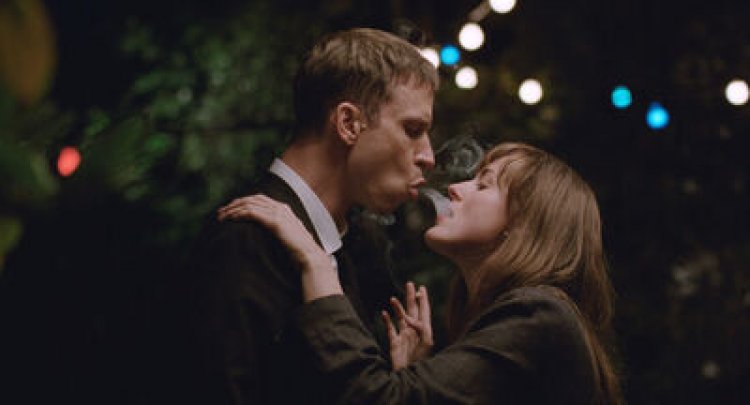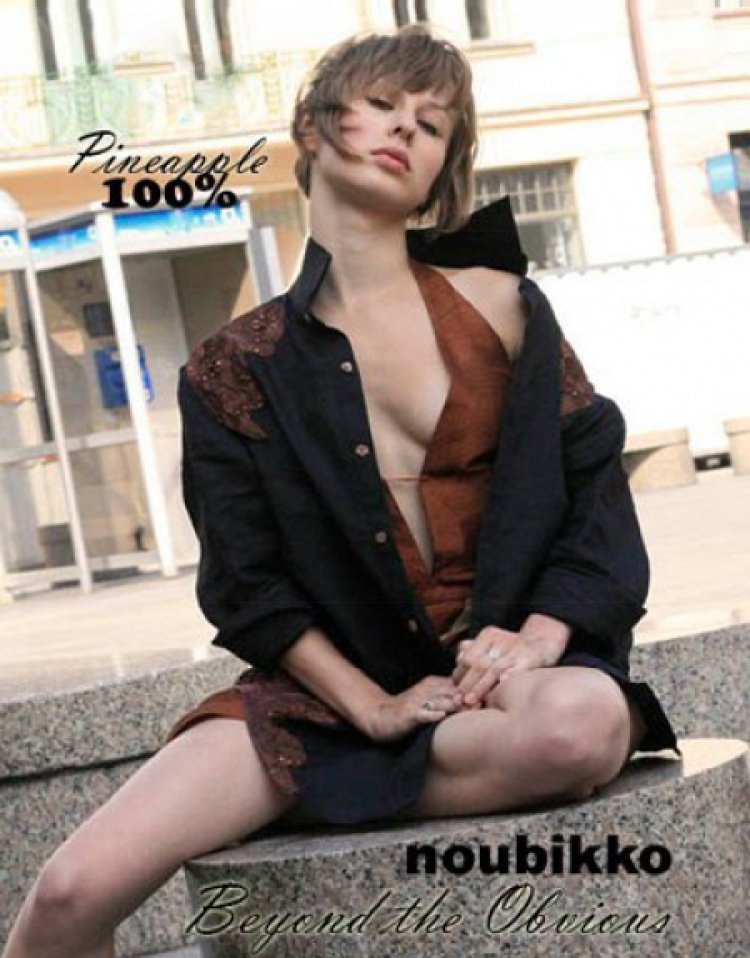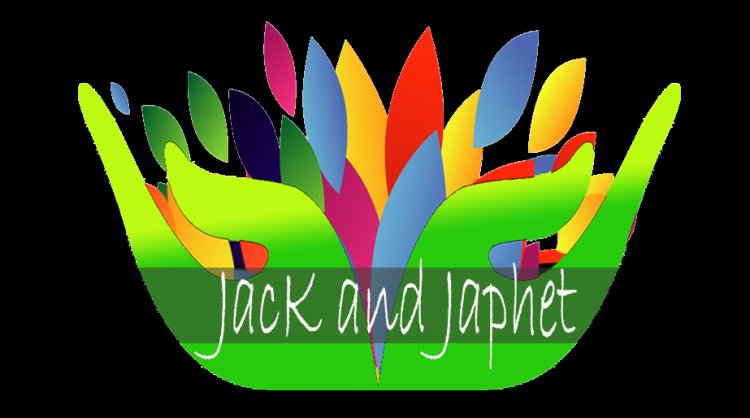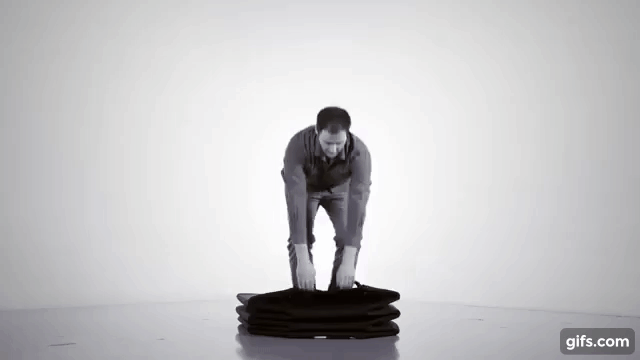The Promise of Life: Joachim Trier and Renate Reinsve on The Worst Person in the World
One of the best movies of last year, Joachim Trier’s “The Worst Person in the World” charts the tumultuous early adulthood of Julie (Renate Reinsve), a young woman searching desperately for any sense that her life is heading in the right direction. Shifting between jobs and relationships across four chaotic years, as the initial momentum of her 20s gives way to the existential anxiety of her 30s, Julie never quite identifies that greater purpose. But as she navigates romances with two different men—world-weary Aksel (Anders Danielsen Lie) and easygoing Eivind (Herbert Nordrum)—Julie begins to discover herself more fully. As charming and indecisive as Julie herself, this Norwegian romantic comedy is staged novelistically, in 14 parts, but retains an almost improvised rhythm, embracing and reflecting Julie’s constant variance through a series of formal stylizations. When she trips on mushrooms, the film playfully spins her fears of aging into a paranoid fantasy. When she’s seized by the impulse to run out on one lover and toward another, Oslo freezes in place so Julie can live out this daydream, sprinting through city streets that have come to a sudden stop. “The Worst Person in the World” is the third and final entry in what Trier has loosely referred to as his “Oslo trilogy,” a series of meditative, quietly observant melodramas set in Norway’s capital city. Since premiering at Cannes last summer, where Reinsve earned the festival’s award for best actress, the film has been rhapsodically received along the festival circuit, has appeared on many year-end top ten lists (including ours), and just received a four-star review from our own Carlos Aguilar. As Norway’s shortlisted Oscar submission, it’s likely to show up in Best International Feature when nominations are announced next Tuesday. But first, “The Worst Person in the World” is finally arriving in U.S. theaters, opening in New York and L.A. this Friday before expanding to other cities Feb. 11. To mark the occasion, Trier and Reinsve sat down earlier this week for a wide-ranging conversation about the effervescent potential of romantic comedies, their film’s modern resonance, and the vitality of being present in one’s own life. Co-writer/director Joachim Trier You’ve spoken in previous interviews about George Cukor’s “The Philadelphia Story” and “Holiday” as reference points for this film, as well as more recent movies like “When Harry Met Sally…” and “Notting Hill.” What is the essence of a great romantic comedy? JOACHIM TRIER: That’s a great question that filmmakers have asked themselves for decades. It’s very relevant to this film, because I think we are making a hybrid, for lack of a less technical term. My co-writer, Eskil Vogt, and I had the supporting wheel or guardrails of a genre as we started out. And we thought, “Let’s see if we can allow ourselves to be freer,” because we started thinking about the tropes of romantic comedy, like the ambivalence of choosing a partner and that almost musical aspect. That was liberating and fun. But to your question about what makes a great romantic comedy: I think if you take seriously the pain, the seriousness, and the existential questioning of negotiating close and romantic relationships, the romantic comedy is an opportunity to talk about some of the most important questions in our lives. There are a lot of ways of avoiding yourself in your life and the choices you make. But when you really get close to someone, you get revealed, sooner or later. Who are you? What are your difficulties? What are you searching for? What are your shortcomings? To make stories that talk about that intimate proximity opens up a lot of interesting questions about identity and character. And ultimately, I’m a character-driven storyteller. I think that’s what I look for in romantic stories. RENATE REINSVE: In all comedy, you have to take the tragedy seriously. And with tragedy, in pain, you often have to make it all look like fun on the outside, because it’s too hard to stay in it and be in it otherwise. That’s Julie’s journey, too. She’s not able to settle and rest in situations or in her emotions. She runs away from it all the time. She makes her own fun. She’s destructive. To have fun with that dynamic was, for me, essential. JT: It’s also interesting to see how different romantic comedies take on different themes. If the romantic comedy’s main premise is to try to talk about how one or several couples find a way to get together or break up or maybe re-engage—as in many of the classic screwball comedies, going out and back in again to have a journey of self-discovery—there are different things that are being dealt with. If you look at “Holiday,” by George Cukor—which we haven’t talked much about, though we often talk about “The Philadelphia Story”—it’s about the expectations of family and the dysfunctional child trying to find a way to free themselves from the structure of family through love. In the wonderful “Notting Hill


One of the best movies of last year, Joachim Trier’s “The Worst Person in the World” charts the tumultuous early adulthood of Julie (Renate Reinsve), a young woman searching desperately for any sense that her life is heading in the right direction.
Shifting between jobs and relationships across four chaotic years, as the initial momentum of her 20s gives way to the existential anxiety of her 30s, Julie never quite identifies that greater purpose. But as she navigates romances with two different men—world-weary Aksel (Anders Danielsen Lie) and easygoing Eivind (Herbert Nordrum)—Julie begins to discover herself more fully.
As charming and indecisive as Julie herself, this Norwegian romantic comedy is staged novelistically, in 14 parts, but retains an almost improvised rhythm, embracing and reflecting Julie’s constant variance through a series of formal stylizations. When she trips on mushrooms, the film playfully spins her fears of aging into a paranoid fantasy. When she’s seized by the impulse to run out on one lover and toward another, Oslo freezes in place so Julie can live out this daydream, sprinting through city streets that have come to a sudden stop.
“The Worst Person in the World” is the third and final entry in what Trier has loosely referred to as his “Oslo trilogy,” a series of meditative, quietly observant melodramas set in Norway’s capital city. Since premiering at Cannes last summer, where Reinsve earned the festival’s award for best actress, the film has been rhapsodically received along the festival circuit, has appeared on many year-end top ten lists (including ours), and just received a four-star review from our own Carlos Aguilar. As Norway’s shortlisted Oscar submission, it’s likely to show up in Best International Feature when nominations are announced next Tuesday.
But first, “The Worst Person in the World” is finally arriving in U.S. theaters, opening in New York and L.A. this Friday before expanding to other cities Feb. 11. To mark the occasion, Trier and Reinsve sat down earlier this week for a wide-ranging conversation about the effervescent potential of romantic comedies, their film’s modern resonance, and the vitality of being present in one’s own life. 
You’ve spoken in previous interviews about George Cukor’s “The Philadelphia Story” and “Holiday” as reference points for this film, as well as more recent movies like “When Harry Met Sally…” and “Notting Hill.” What is the essence of a great romantic comedy?
JOACHIM TRIER: That’s a great question that filmmakers have asked themselves for decades. It’s very relevant to this film, because I think we are making a hybrid, for lack of a less technical term. My co-writer, Eskil Vogt, and I had the supporting wheel or guardrails of a genre as we started out. And we thought, “Let’s see if we can allow ourselves to be freer,” because we started thinking about the tropes of romantic comedy, like the ambivalence of choosing a partner and that almost musical aspect. That was liberating and fun. But to your question about what makes a great romantic comedy: I think if you take seriously the pain, the seriousness, and the existential questioning of negotiating close and romantic relationships, the romantic comedy is an opportunity to talk about some of the most important questions in our lives. There are a lot of ways of avoiding yourself in your life and the choices you make. But when you really get close to someone, you get revealed, sooner or later. Who are you? What are your difficulties? What are you searching for? What are your shortcomings? To make stories that talk about that intimate proximity opens up a lot of interesting questions about identity and character. And ultimately, I’m a character-driven storyteller. I think that’s what I look for in romantic stories.
RENATE REINSVE: In all comedy, you have to take the tragedy seriously. And with tragedy, in pain, you often have to make it all look like fun on the outside, because it’s too hard to stay in it and be in it otherwise. That’s Julie’s journey, too. She’s not able to settle and rest in situations or in her emotions. She runs away from it all the time. She makes her own fun. She’s destructive. To have fun with that dynamic was, for me, essential.
JT: It’s also interesting to see how different romantic comedies take on different themes. If the romantic comedy’s main premise is to try to talk about how one or several couples find a way to get together or break up or maybe re-engage—as in many of the classic screwball comedies, going out and back in again to have a journey of self-discovery—there are different things that are being dealt with.
If you look at “Holiday,” by George Cukor—which we haven’t talked much about, though we often talk about “The Philadelphia Story”—it’s about the expectations of family and the dysfunctional child trying to find a way to free themselves from the structure of family through love. In the wonderful “Notting Hill,” which I know both Renate and I like a lot, it is dealing with the relationship between the idealization—that is so exaggerated, because the regular guy working in a bookstore is in love with a superstar, but that we all feel when we engage in relationships, that admiration of the other—and how we dare to get close to someone that we admire. I think that is a very common human theme. Romantic comedies can take that premise of finding love and talk about quite a lot in regards to it.
“The Worst Person in the World” emulates Julie’s sense of self-discovery through this sensual, unfixed sense of style. Hallucination sequences, voice-overs, the outside world freezing still. What shifts did you each want to convey in Julie, and how did you select the formal innovations that would reflect that inconsistency?
JT: In a way, that’s a question for both of us, because it’s two-part, I sense. I can talk about my intentions, and then Renate can talk about the transformation process. To be quite honest, my job is to tell the story and come up with these formal things, to set the scene. What I find really admirable is how Renate is able to transform, subtly, as we come to the end. I told her early, “I would love people to feel at the end of the film like we’ve been through a big space of several years and someone’s development of life.” And how Renate does that is still a mystery to me, but it seems to be working for everyone that sees the film, which is incredible. There’s a great hair and makeup department and clothes, but there’s something intuitively smart about how she deals with the physical appearance, the movements, and the emotional awakening of a character over so many years, when it’s not shot chronologically.
Form, though, is something that Eskil Vogt, myself, and the editor Olivier Bugge Coutté are very concerned with. We come from being fans of “Hiroshima Mon Amour,” the French New Wave, Nicolas Roeg’s “Don’t Look Now,” all these films that are trying to talk about how time and memory can be dealt with, in cinema, in a way unique from all other art forms. We can cut around and time-layer. You also see it in Bergman in a different way, how he makes dream sequences and the fantastical suddenly appear in the middle of films that are sometimes quite rough and real and human and raw. To create films where there’s both that sense of naturalism and appearance of identification from the audience, then tweaking that into a mushroom trip or an almost-musical sequence of running around Oslo when Julie freezes time, it liberates the audience to have a bigger thematic scope to feel the film in—rather than just a kitchen-sink drama with two people talking all the time. Certainly, there are long dialogue scenes in this film, and I’m very proud of them. But the dynamic between intimacy and the bigger scope of playful movie-making is what I’m curious about.
RR: When I read the script, I felt like every scene contained so much. It was so rich, so full of complexity. With the mushroom trip and going back and forth in time, you got a sense that you’d been everywhere: in time and space, and also emotionally, with all the characters. I was really scared of not getting all those nuances, and not having in the performance all the details that I felt were in the script.
We talked about that very early, how her body language should reflect her state of mind. Julie goes through a journey of being very restless, not being able to decide on anything, not knowing what to do in life or who to be with, and not being able to accept herself. And then she is forced to look at herself, and she goes through the loss of someone, and the loss of the image she had of herself. In the end, you see her actually finding peace and acceptance in being herself.
Since we didn’t film chronologically, I had to be very specific on where she was, in her thoughts and her emotions and her body. Every day of shooting, Joachim and I came in like, “She’s here now, she was there, she’s going here.” We were trying to forget about everything, to lose control, to be really free and play around with where to go with her, because she is so inconsistent. 
Renate, to drill down on that a little further, how do you approach expressing the mercuriality of character motivation? Did you always have to understand Julie to play her?
RR: I don’t really believe that we can see ourselves fully. So much is subconscious. There’s so much history and so much memory that we can’t access. I felt a little scared that this role was so complex, because that meant it was really hard to know who she was. But it was also really liberating to just let go of the idea that I had to know every single step.
I talked to Anders Danielsen Lie, who plays Aksel, about this; he also had the same experience and felt it was more about the dynamic, that the dynamic between us was the lead in the scene. It wasn’t about me coming on set, being a lead. It was about the events and moments happening between us.
That’s Joachim’s philosophy, too: to create these events and make the situations alive. We’re not supposed to do anything right. It’s supposed to be messy. It’s supposed to just happen. And, Joachim, you let the camera roll. You give it time, even though we shoot on film. Because we are well-prepared, and because we talked so much about the scenes, you have the courage and the self-confidence to really let us free in the moments.
JT: That’s making movies, to me, that thing you describe very well. The preparation and all the hard work you guys do, I try to contribute as much as I can: to do rehearsals and give you insight to take ownership of the character. All the preparation, all the intellectual stuff, comes up front. And then, on the day, we have a sense that we can free it up, to let ourselves go, to relieve ourselves of strain and responsibility, to see what happens.
Every take is a new opportunity to be in that moment, to see when something suddenly occurs that’s slightly more unexpected. That’s the dynamic that we’ve been working on. I think that’s interesting stuff. I see a lot of films where I see intention at play in the performance, and that can be very admirable. But it’s not the kind of movie that we’re making right now.
I felt the film demonstrates the value of love as a philosophical pursuit. There’s a trust Julie places in spontaneous romance, and she grows through considering the world from the perspective of difference. Was the script informed by the work of any philosophers in particular?
JT: Thank you. I take it as a compliment that you feel that we are venturing into a more philosophical approach to love than just the erotic aspect, though that’s at play as well. I remember, early on, Eskil Vogt and myself were looking for hooks to hold onto. One thing we read was a quote that I’ve known for years, and loved, from Søren Kierkegaard, the Danish philosopher, who said that we can only understand our life backwards, but we’re forced to live it forwards. And I think that’s the confusion we all feel, is that we always learn too late. We go through things that are completely inexplicable and mysterious. And then years later, we realize.
That’s also why the story of Julie is so long. She suddenly starts realizing how she is building an experience of relationships, and how all the paradoxes that you see specifically in the film show how she is trapped in one role in one relationship then takes on a completely different role in the next one—maybe even the role of the other partner in the first one. You’re on different sides of the fence in certain discussions, going forward. And you become a richer person through those sometimes painful experiences, a more whole person and perhaps a more accepting person in terms of accepting others.
There’s a great book by a British writer and psychoanalyst Adam Phillips, which came out a few years ago, called Missing Out, where he says that, in the therapy room, what he experiences with people a lot is that he realizes that people live their whole life with this big, imagined part of themselves. All the what ifs that never happened. That relationship they think they might or should have had or would have in the future, if they only broke away from the relationship they were in. Or that job they’re going to start doing one day. And it actually becomes your self-perception and your feeling of identity. And, suddenly, life has passed. And that whole imagined self was also a part of who you were, but it was unspoken or unlived. And this is life.
I thought that was an interesting notion, the negotiation between the imagined self and the real self that plays out in time. That’s a big theme that I can make several films about, but this one was specifically through the character of Julie. And I think Renate, Anders, and I—and Herbert, who plays Eivind—talked a lot about those experiences in life. I’m a bit older than Renate, but Renate, you have some life experience, right? You know how things have shaped you? [laughs]
RR: Unfortunately, yes. I’d love to be without them, but it seems like no one can escape that stuff. It’s all a big chaos.
JT: That’s the feedback we’re getting from people who’ve watched the film, is that it’s okay to be ambivalent and feel that things are not in full order. If we can add a consoling notion around that, I think we’re good.
RR: That’s the liberating thing about this movie: it’ll be okay. Surrender to the chaos. 
The film follows Julie’s journey away from identifying herself through vocation, and toward self-love and inner clarity. I don’t know if it’s called this in Norway as well, but the pandemic has led to what some economists are calling the “Great Resignation,” people leaving their jobs voluntarily and rethinking their long-term goals with a greater focus on their own personal fulfillment. What conversations have you had about this film’s modern resonance?
JT: You’re touching on something very interesting. And I feel humble in trying to answer it, because there’s a lot going on in both Norwegian and American society that we didn’t know about, because we didn’t know about the pandemic as we went into shooting this film. But as we were so process-oriented, maybe some things were hiding along the way, because the film was actually shot after the first wave. We shot it in 2020, in the late summer and early autumn.
The Great Resignation can’t only be about one question, but ... what if COVID allowed people to take that step that they had been yearning for, sometimes, to say that the meritocratic society that we live in—particularly in America but also in Norway, to a large extent—where we are feeling that we are so responsible for fulfilling the utmost potential of ourselves, and we carry that alone, that that is a quite a stifling notion for a lot of people? That’s quite a heavy burden to carry: to feel that if you don’t do the greatest thing you could do, you’re a loser.
The idea in psychology of “good enough” can be fine. Maybe there is a life where not everyone becomes that unique snowflake that we are all raised to believe that we have to be to be anything. Maybe there is a place of acceptance in a simpler life, a less turbulent life, without feeling that we’re losing the progressivity of thought or humanity in our own personal life. Maybe the exterior appearance of that success is less interesting than fulfilling it on a more intimate level, in one’s personal life. I don’t know. These are big questions, and I don’t want to come off as pretentious. But I think you’re touching on something that we indirectly have talked about a lot in making this film. Julie is this slightly idealized child from early on. She has good grades. She got into medical school. And she feels this pressure to do something really special. That is complicated for her.
RR: I don’t think I could say it more perfectly. When you wrote the movie, it was before COVID. But I still think it’s a film of our time. It’s a catchy phrase in Norway to say “I feel like the worst person in the world” if you don’t succeed, or if you just feel like a failure a lot. And that’s, of course, really painful. We’re surrounded by so much information and so many choices. You’re almost supposed to brand yourself and make an identity from something exterior. It’s hard to find a way in, to make choices from within, because we compare ourselves so much to other people, especially through social media. And it feels a little flat to talk about social media, but I think we have internalized it. The ways we think are affected by it. I think it’s almost healthy that everyone now is very confronted with themselves. That is also the story of Julie, that she’s finally confronted by herself. It’s a painful but healthy thing in the end.
One last question: One thing that’s lingered with me since I saw the film is its closing song, Art Garfunkel’s cover of “Waters of March.” It was one of the songs I listened to most last year, actually, which I credit entirely to your film. How did you choose it?
JT: Oh, that makes me happy, man! That was intended. When I first heard that song, I knew the Brazilian version by Antônio Carlos Jobim, with several variations of collaborators he’d had with him in Rio through the ’60s and ’70s. And I love that song. Then, suddenly, I heard the Art Garfunkel one, and the lyrics—the stream-of-consciousness lyrics, of all the chaos, of seasons turning, and the spring arriving, it’s almost like a dying breath. All this chaos, the pain and the joy, all of that together, is what creates life. And I thought that was moving.
Eskil and I listened to it, and we actually got the rights to use the song, so we knew we had it for the ending. Very rarely has that happened. A lot of the time, I listen to a set of music, and then I reinterpret the film by bringing in completely different songs. But in this case, it was very fitting, I found. Life flashes by, and the song is just this myriad of observations. Isn’t that your interpretation as well? The big and the small, the sad and the happy. It’s completely fragmented and dynamic—just as we, looking back at our lives, perceive them.
“The Worst Person in the World” opens in theaters this Friday then expands next week. To read Carlos Aguilar's four-star review of the film, click here.
















